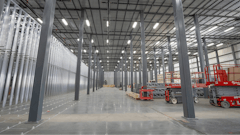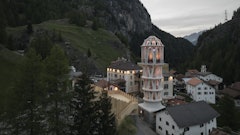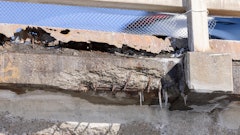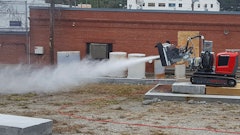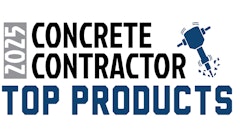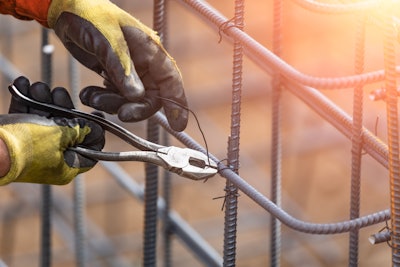
With more than 30 years of experience and dedication to the steel sector, Lou Parous is a leader in international business and a long-time technical professional in the global metals, engineering, technical services, and large-scale construction segment. His outstanding communication skills and strategic mindset make him an exceptional consensus builder and innovator.
In March 2025, the Concrete Reinforcing Steel Institute's (CRSI) executive committee and board of directors announced Parous as the 13th President and Chief Executive Officer of the CRSI. The role will have him oversee executive and strategic operations as well as steward the century-old Institute’s future growth and influence. Concrete Contractor connected with him over email.
Q. What will be your goals as new president and CEO of CRSI?
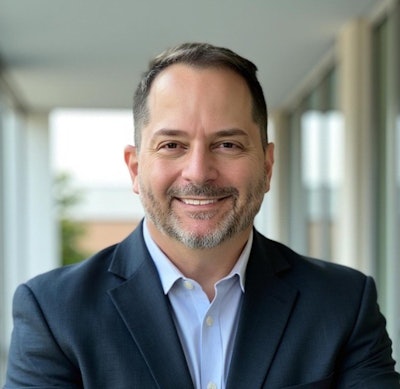 Lou ParousConcrete Reinforcing Steel Institute
Lou ParousConcrete Reinforcing Steel Institute
Additionally, I aim to redefine the Institute's value proposition in terms of content, interface, and impact, ensuring that our value serves as a force multiplier for our members.
Lastly, my vision is to see the Institute continue as a leading, authoritative technical and industry voice for our members, with a focus on adaptive modernization, value innovation, reach expansion, community fostering, and revenue diversity.
Q. How did you begin in steel? Why this industry?
My path through the iron and steel industry began in the manufacturing of various ferroalloys, upon which the modern steel industry depends. As a metallurgical engineer, I have spent my entire career in the pyro-metallurgical and extractive metallurgy arenas in which large-scale electric arc furnaces (EAFs) and large-scale industrial processes are commonplace. I was involved in product development, QA/QC, contract management, strategic planning and risk management, international trade and imports, policy and regulatory management, sales and marketing, R&D, and technology development, all related to the ferroalloy and iron and steel industry.
Later, I moved to Europe and joined a large German OEM and then later migrated to a specialized engineering and consulting firm that was focused on integrated manufacturing in the specialty metals sector, which also shared many similarities to steel production, i.e., using similar furnaces, raw materials, and design and process conditions. This international exposure increased my understanding of supply chains and industrial technology and I was fortunate to work on projects in 25+ countries (Asia, MENA, South America, Europe, USA) in various facets: facilities design, process and factory engineering and optimization, financial and technical due diligence, legal and regulatory, project finance, cost estimates, construction planning, strategic advisory, strategic partnerships, supply chains and materials, product design, commissioning and ramp up of metallurgical facilities.
As building codes adapt to new materials, technologies, and designs, the industry must be prepared and aware of these changes.
This exposure to the modern execution of industrial facilities construction opened the door for me to dive into infrastructure and commercial construction projects at a large rebar fabrication and placing firm in California as a member of the senior leadership team. Rounding out my exposure to large-scale construction projects completed my "education" in the long winding path between raw materials such as ores, minerals, and actual construction projects, all still within the steel eco-system. At CRSI, I’m able to utilize this immense and varied experience and exposure to help the Institute continue its mission into the next 100 years.
Q. How has concrete reinforcement changed throughout your career? What were the significant changes? How did these affect construction?
Concrete reinforcement has undergone significant changes during my career, driven by advancements in materials, technology, and construction practices. These changes have made concrete more durable, economical, and sustainable.
One of the most significant innovations is the development of high-strength concrete and high-strength steel with higher tensile and yield strengths, which offers greater compressive strength and durability. This type of concrete is used in the construction of long-span bridges and skyscrapers that is transforming our landscape and cities.
Along with improvements in prefabbed construction elements, mechanical splices and couplers, bar coatings, corrosion resistance, and other innovations have all had a transformative impact on the use of reinforced concrete in construction.
I believe the effect of tariffs on the concrete reinforcing industry will be mixed.
Q. What are the main issues in the concrete reinforcing steel industry right now? What role does CRSI have in these?
As building codes adapt to new materials, technologies, and designs, the industry must be prepared and aware of these changes. CRSI is a voice of the industry as a codes and standards organization that develops and maintains guidelines for its members. The Institute provides a common language and requirements for the construction and steel industry, benefiting architects, designers, engineers, manufacturers, placers, and construction project owners.
Sustainability is a topic that State governments and regulatory bodies are developing for their local construction sector. The development of EPD (environmental product declarations) is important to meet these developing regulations are based on a Life Cycle Assessment (LCA), which analyzes the environmental effects from raw material extraction to disposal. They help manufacturers demonstrate their commitment to sustainability, provide comparable environmental data, and inform decision-making in product selection and design, as well as being an important part of State regulatory deployment and compliance.
Constructability and resiliency are other important developments as project owners and developers seek to provide robust, long-lasting, safe, and reliable buildings and construction projects that meet fire, corrosion, and seismic standards at competitive costs. Improved constructability of large-scale projects is of high interest to developers, architects, and engineers as they seek to build innovative, creative, and visually appealing designs.
I want to extend my heartfelt gratitude to all concrete contractors for their unwavering dedication and hard work in shaping our built environment.
Lastly, the construction industry struggles with qualified labor and training in relevant fields and at attracting new talent. As such, CRSI supports the industry in providing training and know-how transfer for members, standardized learning systems and certification for professional development, research in steel-related fields, and scholarships for recognized students in qualified universities who seek careers in steel and concrete construction. Overall, CRSI is a nexus of comprehensive support and advocacy for the steel and construction industry.
Q. How do you see tariffs affecting the concrete reinforcement industry?
I believe the effect of tariffs on the concrete reinforcing industry will be mixed. While steel prices may rise due to restricted supply of import material, which tends to set the market floor price, the overall cost component of steel-reinforced concrete on a construction project is not a major factor.
Framing systems represent only around 12 percent of the construction project costs, so tariff impacts on project cost will be somewhat limited. A more long-term view is that tariffs encourage increased domestic production of materials, which can lead to increased supply and consequently lower prices; and ultimately lead to an increased economic impact on lowering construction project costs, so long as the tariffs remain in place.
Q. What message would you like to share with concrete contractors?
I want to extend my heartfelt gratitude to all concrete contractors for their unwavering dedication and hard work in shaping our built environment. Your expertise and commitment are the backbone of our industry, and I am honored to work alongside such talented professionals. I understand that the construction industry faces numerous challenges, from fluctuating material costs to evolving regulatory requirements. These challenges require us to be adaptable and resilient. I want to assure you that CRSI is committed to supporting you through these times by providing the latest industry insights, technical resources, and advocacy efforts to ensure a stable and prosperous future for all.
At CRSI, we are dedicated to advancing the field of concrete reinforcement through continuous innovation and adherence to the highest quality standards. Our research and development efforts are focused on creating more durable, sustainable, and cost-effective solutions for reinforced concrete structures. We believe that by embracing new technologies and best practices, we can enhance the performance and longevity of our projects.
I encourage all concrete contractors to take advantage of the resources and support available through CRSI. Whether it's through our educational programs, technical publications, or industry events, we are here to help you succeed. Together, we can build a stronger, more resilient future for our communities.
Thank you for your continued partnership and dedication to excellence. Let's continue to build a better world, one reinforced concrete structure at a time.




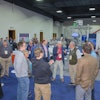
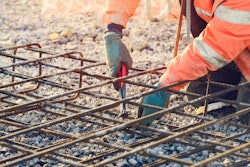

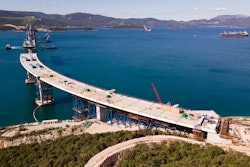
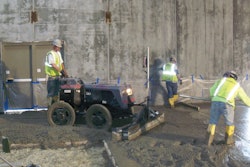

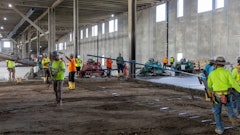


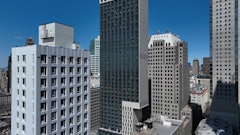
![Strux Macrofibers 58c9b97fd4aaf[1]](https://img.forconstructionpros.com/mindful/acbm/workspaces/default/uploads/2025/08/strux-macrofibers58c9b97fd4aaf1.cNEEIfY9kp.png?ar=16%3A9&auto=format%2Ccompress&fit=crop&h=135&q=70&w=240)

